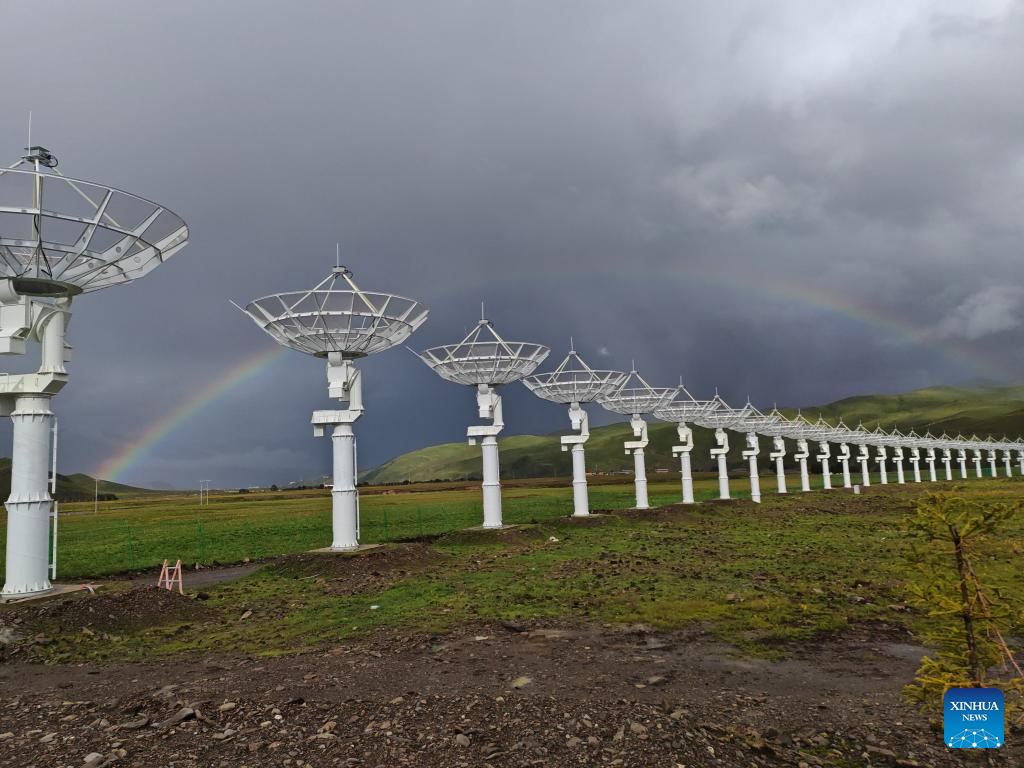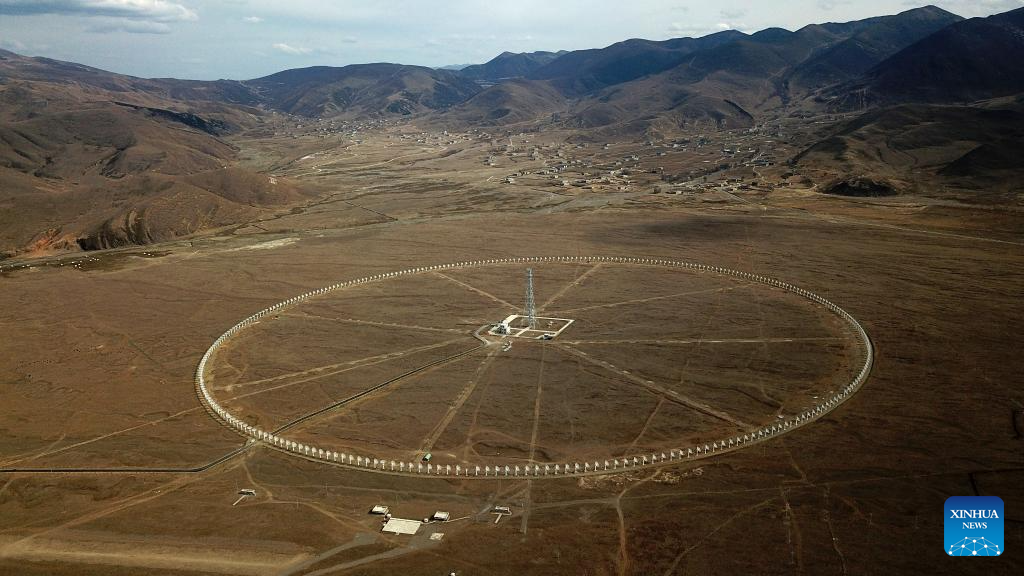
This photo taken on Aug. 27, 2023 shows a view of the Daocheng Solar Radio Telescope in Daocheng County, southwest China's Sichuan Province. (Photo by Wu Junwei/Xinhua)
BEIJING, Sept. 27 (Xinhua) -- The Daocheng Solar Radio Telescope, a solar telescope array in southwest China, passed key testing on Wednesday, marking the official completion of the world's largest synthesis aperture radio telescope, according to the Chinese Academy of Sciences (CAS).
The CAS said that the telescope array is a landmark equipment of the country's space environment ground-base comprehensive monitoring network (phase-2 Meridian Project) and will provide high-quality observation data for solar physics and space weather research in China.
In an open area at an altitude of 3,820 meters in Daocheng County, Sichuan Province, 313 parabolic antennas with a diameter of 6 meters are evenly arranged, forming a large ring with a diameter of 1 km, looking like a string of pearls lying flat on the plateau.
The testing showed that the telescope array had achieved continuous and stable solar radio imaging and spectrum observation capabilities with a maximum field of view of ten solar radii, and all technical indicators met or exceeded design requirements.
A solar radius is a unit of distance in astronomy equal to the current radius of the Sun, approximately 695,500 km.
"When the Sun sneezes, Earth may catch a cold," said Yan Jingye, director of the project from the CAS.
He noted that the changes in the space environment caused by solar activities on a short time scale are referred to as space weather. High-quality monitoring and prediction of space weather are of great significance for the smooth operation of high-tech systems such as space projects and satellite communication.
According to Yan, the telescope array can monitor various solar eruptions and the process of solar storms entering interstellar space, which helps to predict and assess the impact of solar activity on Earth by understanding the mechanism of solar eruptions and the laws of solar storm propagation from Sun to Earth.
Besides monitoring solar activities, the telescope array will also conduct joint observations with other major national scientific and technological infrastructure, including the FAST telescope (China Sky Eye) in Guizhou Province, China's deep-space observation radar facility (China Compound Eye) in Chongqing Municipality, and Sanya Incoherent Scatter Radar in Hainan Province. ■

This photo taken on Aug. 27, 2023 shows a view of the Daocheng Solar Radio Telescope in Daocheng County, southwest China's Sichuan Province. (Photo by Wu Junwei/Xinhua)

This aerial photo taken on April 22, 2023 shows a view of the Daocheng Solar Radio Telescope in Daocheng County, southwest China's Sichuan Province. (Xinhua/Jin Liwang)

This aerial photo taken on April 22, 2023 shows a view of the Daocheng Solar Radio Telescope in Daocheng County, southwest China's Sichuan Province. (Xinhua/Jin Liwang)

This aerial photo taken on April 22, 2023 shows a view of the Daocheng Solar Radio Telescope in Daocheng County, southwest China's Sichuan Province. (Xinhua/Jin Liwang)

This aerial photo taken on April 22, 2023 shows a view of the Daocheng Solar Radio Telescope in Daocheng County, southwest China's Sichuan Province. (Xinhua/Jin Liwang)



